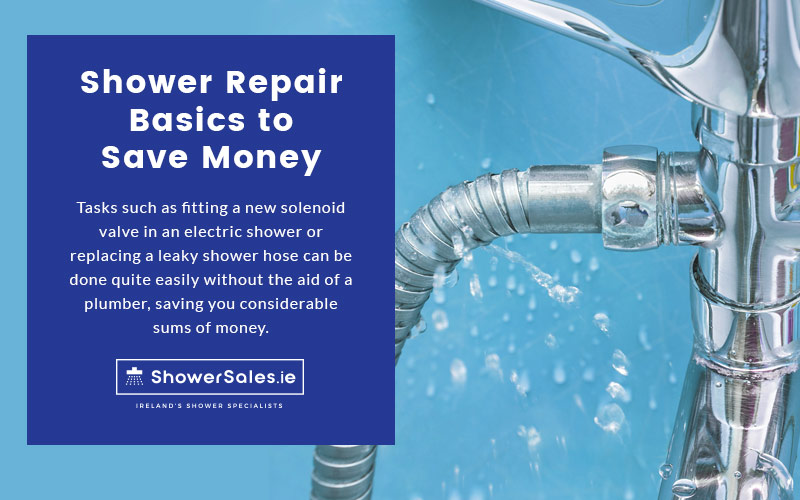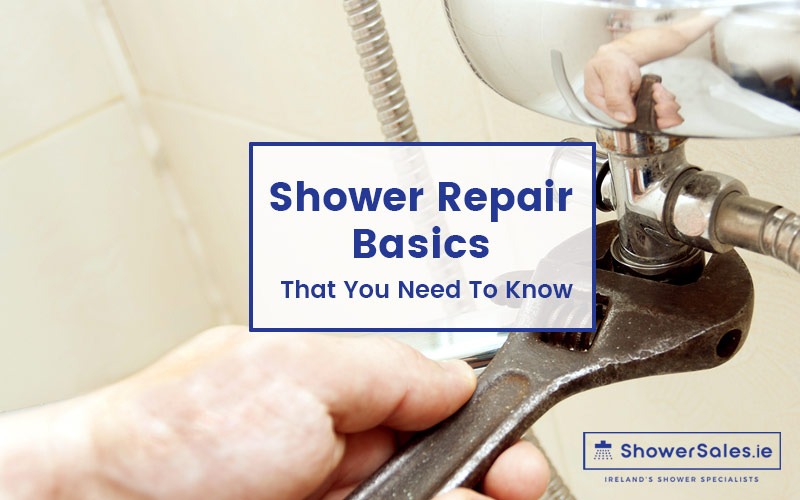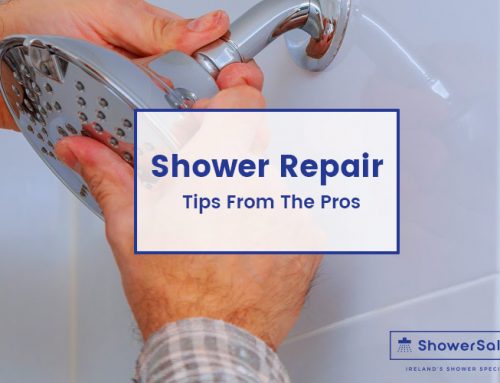When it comes to showers, there are some jobs that are better left to the professionals, especially if you’re a novice DIYer. You can however tackle many shower repairs yourself if you have the correct equipment and have done your research before you begin. In this post we’ll give you some of the shower repair basics to get you going in the right direction and make sure to check out our shower repair tips for more!
Shower Repair Basics to Save Money
Tasks such as fitting a new solenoid valve in an electric shower or replacing a leaky shower hose can be done quite easily without the aid of a plumber, saving you considerable sums of money. There are, however, a number of important safety issues you need to be aware of before you even attempt to do any work on your shower.

Switch Off The Electricity
It sounds obvious, but when making repairs to an electric shower you should always make absolutely certain that it is isolated from the electrical mains. This does not just involve turning the shower off using the pull cord or the isolation switch, as you must also shut off the power to the shower at the fuse board. It is a good idea to place a piece of tape over the fuse board switch and the isolation switch to make it clear to anyone else who’s in the property at the time that it must not be switched back on.
If you have an old style fuse, pull it out and place it in your pocket so that no one can pop it back in, and if you have a pull cord, tie this up to prevent anyone else from reaching it while you are working.
Turn Off Your Water Supply – Shower Repair Basics
In addition to switching off the electricity another key shower repair basic you’ll need to do is to turn off the water supply before you start repairing your shower. There should be a shut off valve to the shower itself, and you should also disconnect the mains water supply to the house.
Failure to do so could lead to water damage in your bathroom, not to mention cause a serious slipping hazard. Let any remaining water flow out of the shower head before taking the final safety precaution.
Dry The Area Thoroughly
Baths and shower cubicles can be slippery places, and while it may have been several hours since anyone used the shower, there could still be some traces of water that could cause you to slip and hurt yourself while you are working. So before you begin your repair job, take a towel and dry the area thoroughly. After you’ve done that, make sure there are no more drips coming from your taps or shower head.

Shower Repair Basics & Servicing
Hope you found the above shower repair basics helpful for the next time you find yourself having to do some shower related DIY at home. At ShowerSales.ie we can fit and repair every shower product that we sell, giving you peace of mind guaranteed! If you need some help with shower repairs then get in touch with us today to experience the difference.



